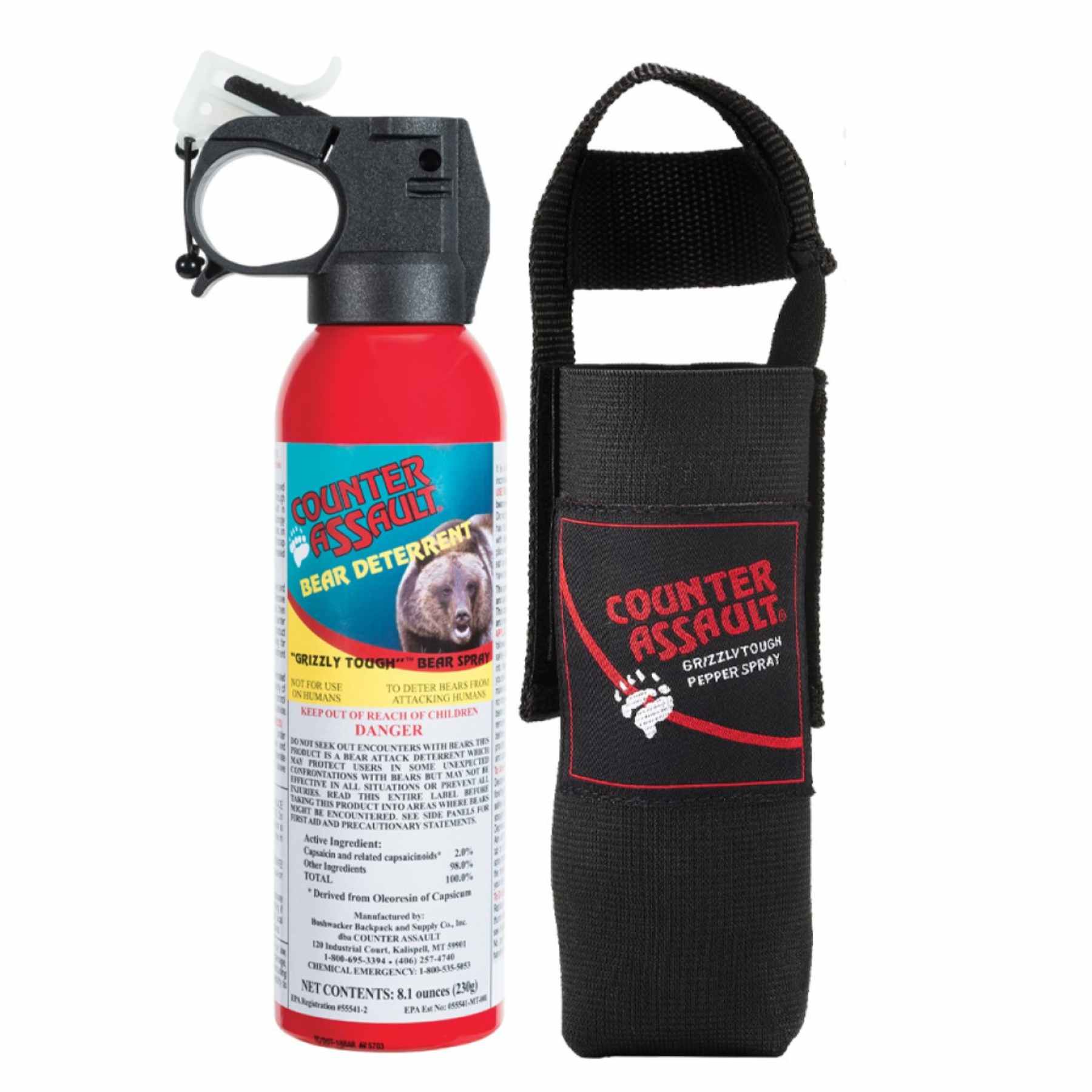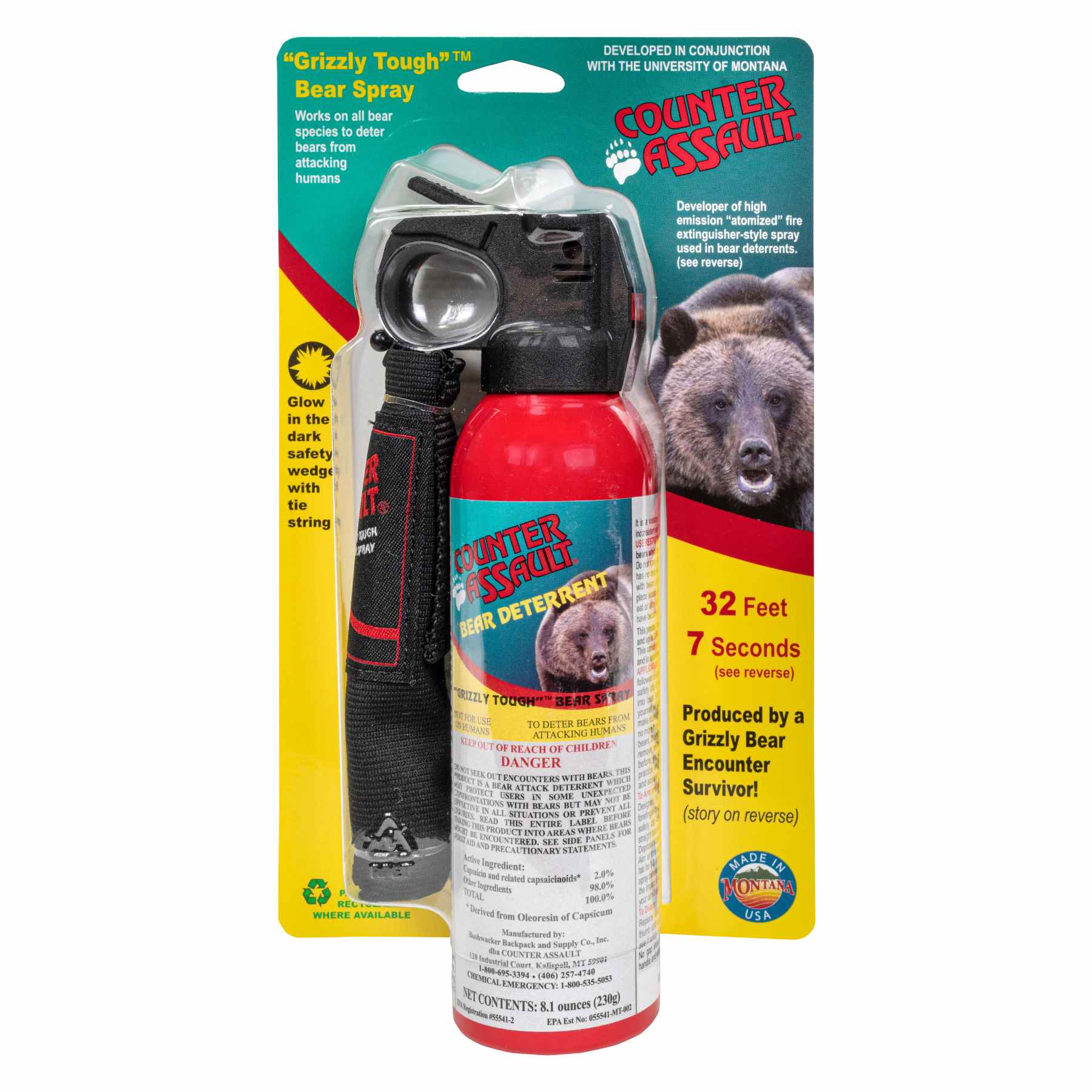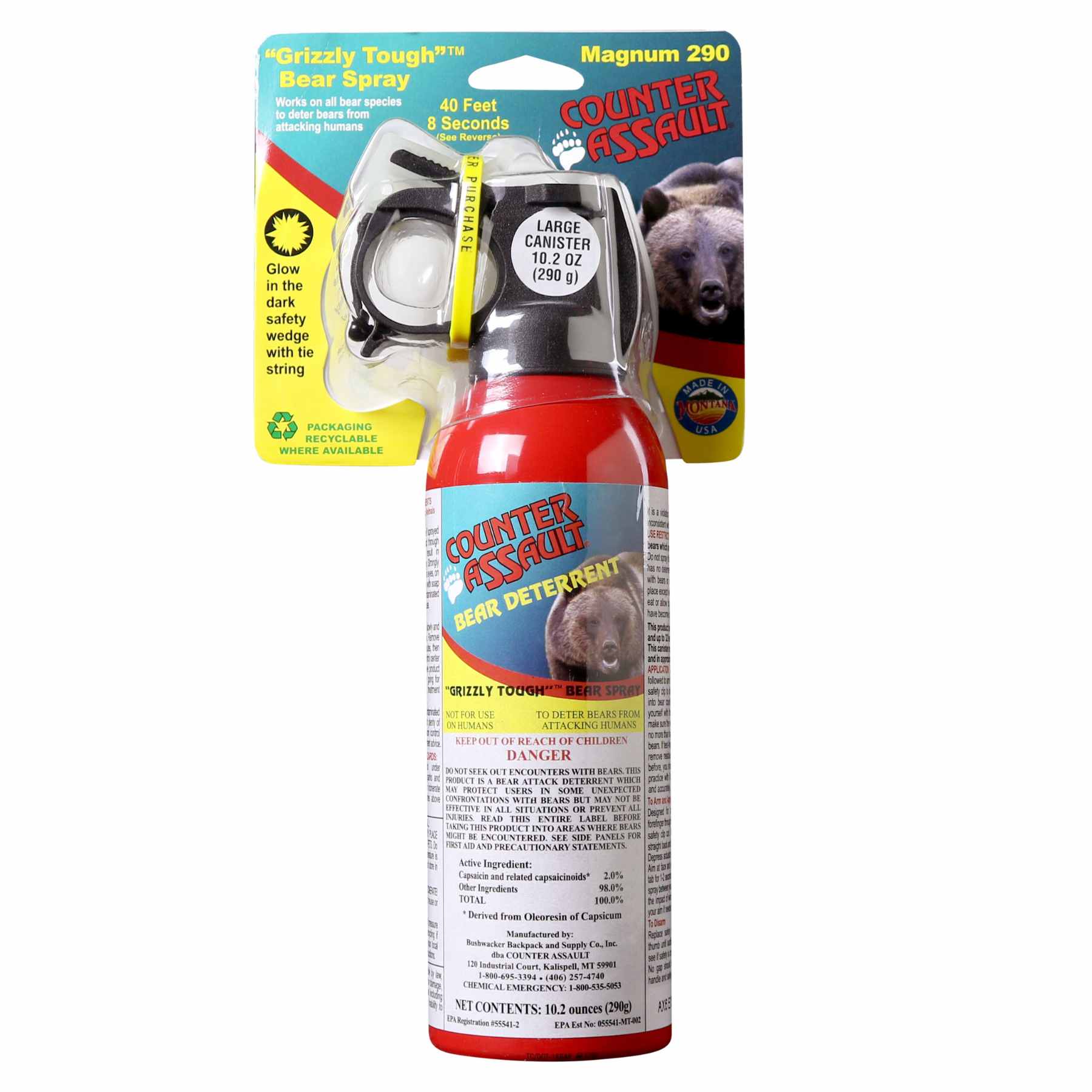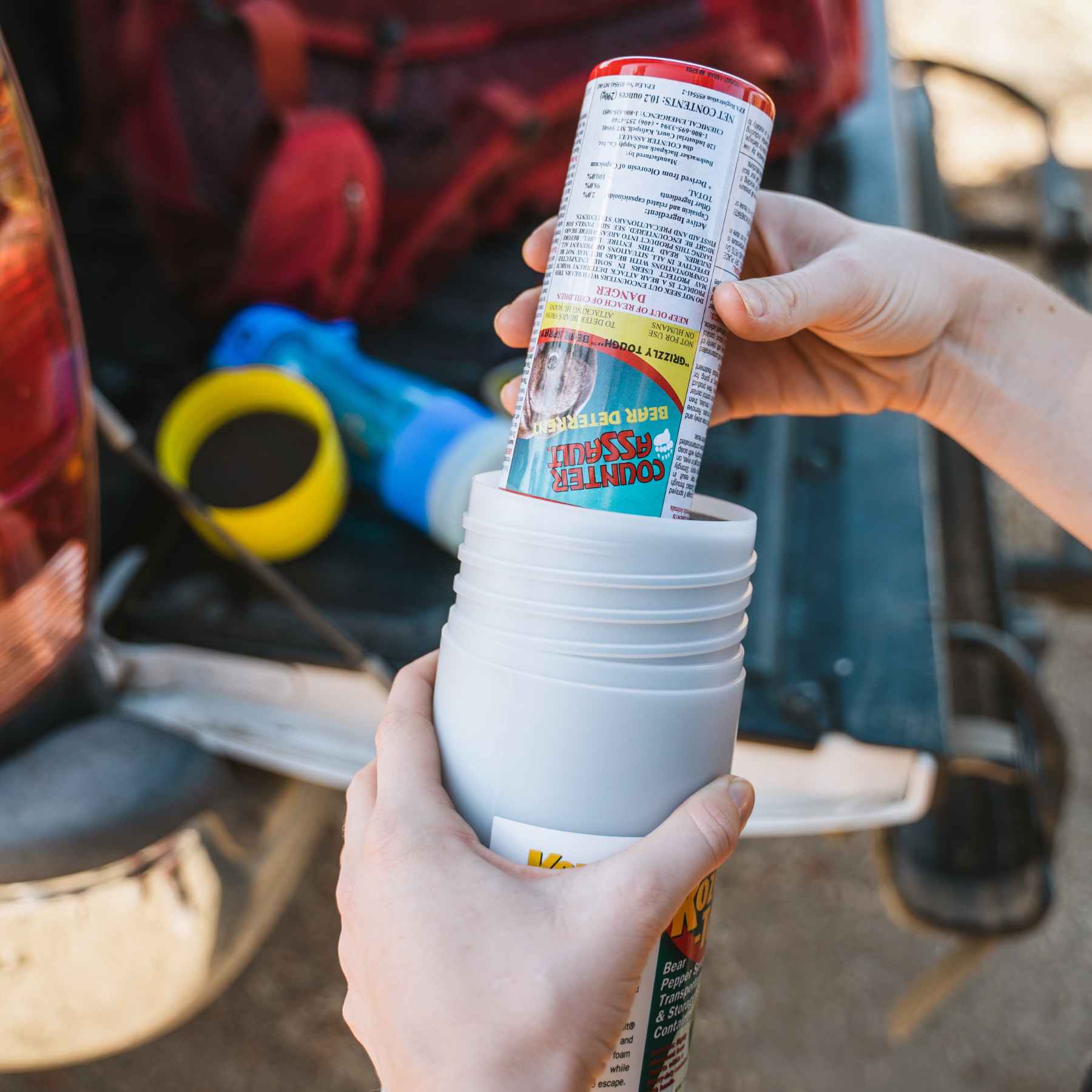Frequently Asked Questions
Yes, we recommend practicing with our Inert Training Canister. Practicing will allow you to feel confident and prepared should you ever need to deploy Bear Spray in a life-threatening situation. Even if you don’t practice the act of spraying with the Training Canister, you should practice pulling your bear spray out from the holster and removing the safety clip to become familiar and comfortable with that action should a critical situation arise.
You should carry your bear spray in a readily accessible location, ideally on your person. The recommended way to carry bear spray is in a dedicated quick-draw holster attached to the front of you – like on your belt, waistband, or chest. This ensures quick and easy access in case of an encounter with a bear. Avoid storing it inside a backpack or in a location that would be difficult to reach in an emergency situation. Remember, the key is to have it readily available so you can deploy it quickly if needed.
If traveling by car, secure your bear spray safely in a glove box or designated storage area and do not pack items on top of it to prevent accidental discharge. Bear spray should be stored at room temperature and not exposed to extreme temperatures. Bear spray should never be left in a car as it is a pressurized canister and can leak if exposed to high temperatures. The Counter Assault Kozee-Tote Bear Spray Carrier is a great option to keep bear spray safe from accidental discharge when traveling in vehicles, boats and non-commercial aircraft. Bear spray is not allowed on commercial flights in either your checked or carry-on luggage. If traveling on a commercial flight, be sure to plan ahead and purchase bear spray at your destination.
Bear spray is only to be used as a last resort. The situations when you should use your spray are 1) when a bear is actively charging you, or 2) showing signs of aggression as if it is going to charge you. This could include making loud noises, huffing, growling, or displaying other aggressive behavior. If the bear is clearly agitated and not leaving the area, it is time to think about using bear spray. It is not to be used when you see a non-threatening bear in the wild. If you see a bear, most times there will not be a conflict and you should be able to slowly back away and remove yourself from the situation
If a bear is charging you, hold the can firmly and remove the safety clip by placing your thumb in front of the clip and pulling back. Press the trigger and direct the spray cloud downward at the front of the bear. Continue spraying until the bear diverts its charge. If a bear is charging from within…. - 60 feet, spray 30-40 feet in front of you. The bear will meet the cloud almost simultaneously at that point. - 30 feet, spray downward at the front of the bear until it diverts its charge. - 15 feet, try to spray the bear but be ready to lie face down on the ground, protecting the back of your neck while holding the can and randomly spraying the area.
Bear spray and self-defense pepper spray have some key differences. It is illegal to deploy bear spray against humans. Bear spray is specifically designed to deter bears in the event of an encounter. Bear spray is formulated to have a longer range (Counter Assault Bear Spray can reach up to 40 feet) than pepper spray (designed to only reach about 10 feet). Most pepper sprays have a lower concentration of capsaicin, the active ingredient in both products, while Counter Assault has the maximum allowed at 2%. Pepper spray designed for self defense will not have the power or distance to deter a bear and they are not interchangeable.
Counter Assault Bear Spray has over 90% less global warming potential than competitor sprays. With a Global Warming Potential Rating of under 150, our sprays are significantly less harmful to the environment than competitor sprays with a Global Warming Potential Rating of over 1,000. Counter Assault is proud to be the first Bear Spray producer to comply with both the US EPA’s AIM Act and the Canadian Montreal Protocol On Substances that Deplete the Ozone Layer.
Bear spray is considered hazardous waste and cannot be put into your regular garbage. We recommend contacting your local waste management company or recycling center as they have a process to safely dispose of bear spray. If you are in the Greater Yellowstone or Glacier National Park areas, there are recycling programs with designated drop-off points so the canister can be recycled.
All food, trash, toiletries and other scented items should be stored in the bearproof Bear Keg. This includes all sealed food, sunscreen, soap, bug repellent, deodorant, medications, and feminine products.
The Bear Keg should be placed at least 100 feet from camp on flat ground. Do not store it near a cliff or on a hill. Do not hang or attach anything to the canister as the bear will be able to use it to carry it away. Placing pots and pans on top of the Bear Keg can be an option as well to act as an alarm if the Keg is disturbed.
Shop all that Counter Assault has to offer: bear sprays, inert training canisters, combo packs, bear spray holsters, and bearproof storage. With an 8.1 oz. (32-foot) and 10.2 oz. (40-foot) bear spray, these canisters deploy a powerful atomized blast of concentrated pepper spray. Inert training canisters ensure that you will be ready in the event of an encounter and the Bear Keg food storage container keeps food secure and away from camp when in areas that bears frequent. Save on combo packs for yourself and a companion and grab one of our specially-designed holsters to comfortably secure your spray.








































